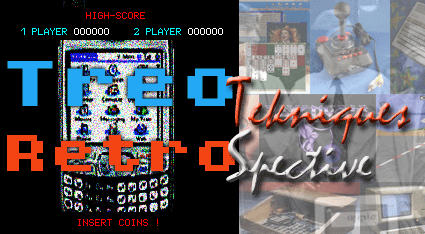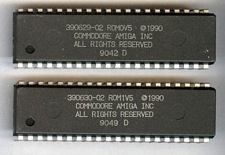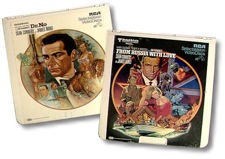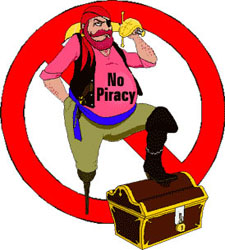
Retrospective, Part 2: Getting to know the beast!
Welcome back to TreoTekniques: Last time we elaborated on the history of emulators, what they are, and gave your Treo a prep treatment and wax job so it's ready to Rock n' Roll in the morning.
Here in part 2, we'll explain all the bits and pieces you'll need to properly run these buggers, as well as other topics deeply related to emulation. So, lets step it up a notch and get your bytes flowing with what you're craving�
Gear (and Sprockets)
Picking up where we left off, you now have your Treo all nice and tucked in with
"UDMH" and freshly de-fragmented memory and you're itching to get the ball rolling by configuring your first emulator�
What do you want sink your teeth into first? There are three basic types of emulators out there:- Computer System/State
- Video Game Console
- Calculator
Let's begin with a briefing on the tools of the trade that you will need for each one.
The basic element is the emulator itself. The problem is, there are so many of them out there for PalmOS that you might feel like they are being built like Wal-Marts, but unfortunately not all of them will run properly on your Treo. Figuring out what will is kind of hit or miss, as some were made to run on Graffiti-driven devices and don't properly understand a Treo's physical keyboard. Others will run like gangbusters and keep you faithfully entertained without a hitch, or a crash in this regard.
Now, let's go down the list and see what you're gonna need. To run a Computer Emulator. First you need what's called a System ROM Image.
 A System ROM is the firmware that the computer you are emulating uses to bootstrap before it can run any programs at all. Named the "BIOS" in desktop PCs, this chip contains the basic building blocks a computer needs to start up, configure devices and load an Operating System. Almost all emulators that mimic computers will need a System ROM, and sometimes getting your mitts on the one you need is quite the parlor trick.
A System ROM is the firmware that the computer you are emulating uses to bootstrap before it can run any programs at all. Named the "BIOS" in desktop PCs, this chip contains the basic building blocks a computer needs to start up, configure devices and load an Operating System. Almost all emulators that mimic computers will need a System ROM, and sometimes getting your mitts on the one you need is quite the parlor trick.
The best and most logical way to get one is to use a ROM-extracting utility on the actual, physical machine that you are trying to emulate. There are utilities out there for almost every computer platform in the world that let you copy the internal ROM to a diskette for use with emulation software.
Of course, many of you don't have the actual old machine anymore, as it joined the scrap-heap of adolescent memories along with Disco and your old copy of Dr. No on a SelectaVision Disk, so the second best way to get a ROM is to check your local neighborhood internet vendor and see if they sell a licensed copy on CD, DVD, or other modern media.
 For example, Amiga Forever, the blockbuster Amiga emulation suite not only ships with UAE for every imaginable platform in the world (including UAE for Amiga), but also the needed ROMs to run them and about as many versions of the Amiga Operating System as Jerry Lewis has pairs of socks. As far as emulation packages go, it's probably the best I've ever seen and definitely takes the cake for presentation and included utilities.
For example, Amiga Forever, the blockbuster Amiga emulation suite not only ships with UAE for every imaginable platform in the world (including UAE for Amiga), but also the needed ROMs to run them and about as many versions of the Amiga Operating System as Jerry Lewis has pairs of socks. As far as emulation packages go, it's probably the best I've ever seen and definitely takes the cake for presentation and included utilities.
Of course, you could always try to find the system ROM on your own by searching through forums, Usenet, Google searches, and P2P sites, but if you don't own the system you are trying to emulate you will be entering a very legally grey area.
 Please be advised that neither I, nor TreoCentral.com endorse the use of illegally pirated software. There are plenty of ways to legally get what you need & want � support legitimate vendors and companies that have stuck their necks out to support the EmuScene and your actions reward all of us with their future support. If you're gonna strap on your peg leg and eye patch to get what you want, don't ask us for help.
Please be advised that neither I, nor TreoCentral.com endorse the use of illegally pirated software. There are plenty of ways to legally get what you need & want � support legitimate vendors and companies that have stuck their necks out to support the EmuScene and your actions reward all of us with their future support. If you're gonna strap on your peg leg and eye patch to get what you want, don't ask us for help.
The next thing you will need is software to run on your emulator. Software comes in the form of Disk Images and Tape Images (for those of you who remember when all the cool stuff came on cassette!) is the way to go folks, and there really isn't another choice.
Disk images are files that store, bit for bleeding bit, the data once recorded on a floppy disk and are generally a uniform size for each platform. Apple ][ and Amiga diskettes are 140K and 880K files respectively for example, and a PC disk image will be either 720K or 1400K, as they are exact duplicates in the form of a binary file and even contain the empty areas on a disk.
You can gather them up either on a CD distributed from varied sources, or copy from the actual diskettes with various tools on the original computer intended to run them, or on other PCs with the right add-on widgets and do-hickeys.
Be Warned! Some tools might force you into the wonderful world of geekdom, involving long, drawn out hassles fidgeting around with old hardware, drooling over an ancient serial port transfer, or pulling your hair out struggling with mounting alien file systems under Linux. Thus, if you are fairly non-technical you might want to skip ahead to the next option.
Downloading disk images >>
Copyright 1999-2016 TreoCentral. All rights reserved :
Terms of Use : Privacy Policy
TREO and TreoCentral are trademarks or registered trademarks of palm, Inc. in the United States and other countries;
the TreoCentral mark and domain name are used under license from palm, Inc.
The views expressed on this website are solely those of the proprietor, or
contributors to the site, and do not necessarily reflect the views of palm, Inc.
Read Merciful by Casey Adolfsson

 A System ROM is the firmware that the computer you are emulating uses to bootstrap before it can run any programs at all. Named the "BIOS" in desktop PCs, this chip contains the basic building blocks a computer needs to start up, configure devices and load an Operating System. Almost all emulators that mimic computers will need a System ROM, and sometimes getting your mitts on the one you need is quite the parlor trick.
A System ROM is the firmware that the computer you are emulating uses to bootstrap before it can run any programs at all. Named the "BIOS" in desktop PCs, this chip contains the basic building blocks a computer needs to start up, configure devices and load an Operating System. Almost all emulators that mimic computers will need a System ROM, and sometimes getting your mitts on the one you need is quite the parlor trick.
 For example, Amiga Forever, the blockbuster Amiga emulation suite not only ships with UAE for every imaginable platform in the world (including UAE for Amiga), but also the needed ROMs to run them and about as many versions of the Amiga Operating System as Jerry Lewis has pairs of socks. As far as emulation packages go, it's probably the best I've ever seen and definitely takes the cake for presentation and included utilities.
For example, Amiga Forever, the blockbuster Amiga emulation suite not only ships with UAE for every imaginable platform in the world (including UAE for Amiga), but also the needed ROMs to run them and about as many versions of the Amiga Operating System as Jerry Lewis has pairs of socks. As far as emulation packages go, it's probably the best I've ever seen and definitely takes the cake for presentation and included utilities.
 Please be advised that neither I, nor TreoCentral.com endorse the use of illegally pirated software. There are plenty of ways to legally get what you need & want � support legitimate vendors and companies that have stuck their necks out to support the EmuScene and your actions reward all of us with their future support. If you're gonna strap on your peg leg and eye patch to get what you want, don't ask us for help.
Please be advised that neither I, nor TreoCentral.com endorse the use of illegally pirated software. There are plenty of ways to legally get what you need & want � support legitimate vendors and companies that have stuck their necks out to support the EmuScene and your actions reward all of us with their future support. If you're gonna strap on your peg leg and eye patch to get what you want, don't ask us for help.